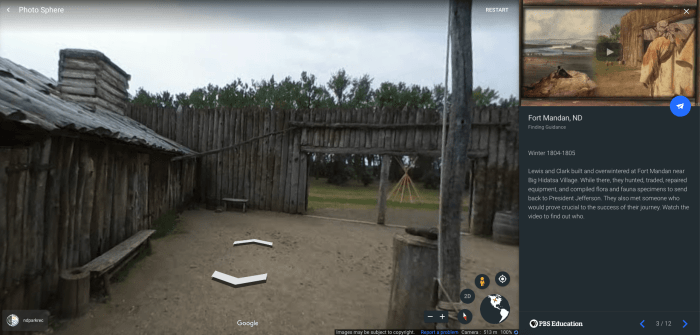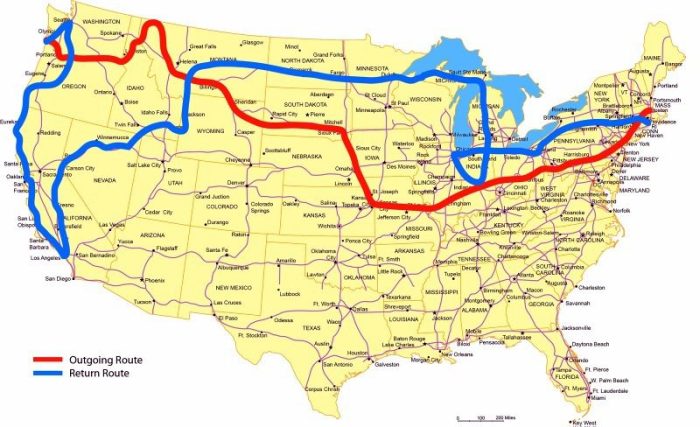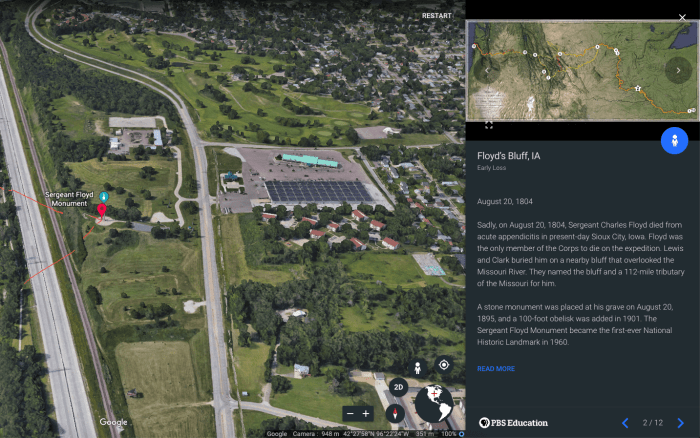Google earth lewis and clark expedition – Google Earth: Exploring the Lewis and Clark Expedition provides an immersive and engaging way to retrace the footsteps of the iconic explorers. With its comprehensive mapping and historical imagery, Google Earth offers a unique perspective on the expedition’s route, landmarks, and cultural encounters.
From the rugged terrain of the Missouri River to the vast expanse of the Pacific Northwest, Google Earth allows us to navigate the same landscapes that Lewis and Clark traversed over two centuries ago.
Historical Context

The Lewis and Clark Expedition, led by Meriwether Lewis and William Clark, was a pivotal expedition in American history. Commissioned by President Thomas Jefferson in 1803, the expedition aimed to explore the Louisiana Purchase, a vast territory acquired from France.
The expedition’s ambitious goal was to reach the Pacific Ocean and establish a route for trade and exploration.
Google Earth provides an invaluable tool for exploring the Lewis and Clark Expedition’s route and landmarks. By overlaying historical imagery onto modern maps, Google Earth allows users to trace the expedition’s path, identify geographical features, and gain a deeper understanding of the challenges and discoveries encountered along the way.
Geographical Analysis
The Lewis and Clark Expedition’s route spanned over 8,000 miles, from the Missouri River to the Pacific Ocean. Using Google Earth, we can map the expedition’s progress and identify key geographical features encountered during the journey.
Major Geographical Features
- Missouri River: The expedition’s starting point and main artery of travel.
- Rocky Mountains: A formidable barrier that the expedition crossed with great difficulty.
- Columbia River: The waterway that led the expedition to the Pacific Ocean.
Historical Imagery Timeline
Google Earth’s historical imagery feature allows us to create a timeline of the expedition’s progress. By comparing images from different years, we can visualize the changing landscape and the challenges faced by Lewis and Clark.
Cultural Interactions

The Lewis and Clark Expedition encountered a diverse array of Native American tribes throughout their journey. Google Earth helps us locate and explore the villages and cultural sites visited by Lewis and Clark.
Native American Tribes
- Mandan: A sedentary tribe that provided the expedition with food and shelter.
- Shoshone: A nomadic tribe that guided the expedition through the Rocky Mountains.
- Chinook: A coastal tribe that assisted the expedition in reaching the Pacific Ocean.
Impact on Native American Communities
The expedition had a profound impact on Native American communities. The introduction of European diseases, trade goods, and cultural practices disrupted traditional ways of life and led to conflicts.
Scientific Discoveries: Google Earth Lewis And Clark Expedition

The Lewis and Clark Expedition made significant scientific discoveries that contributed to the development of American science.
New Species
- Grizzly bear
- Pronghorn antelope
- Black-footed ferret
Geographical Features
- Great Falls of the Missouri River
- Shoshone Falls
- Mount Hood
Importance of Discoveries, Google earth lewis and clark expedition
These discoveries expanded the scientific knowledge of the American West and laid the foundation for future exploration and settlement.
Legacy and Impact

The Lewis and Clark Expedition had a lasting impact on American history and shaped the development of the American West.
Virtual Tour of Landmarks
Google Earth allows us to create a virtual tour of key landmarks associated with the expedition, including:
- Fort Mandan
- Pompey’s Pillar
- Cape Disappointment
Role in Shaping the American West
The expedition’s exploration and mapping of the American West paved the way for westward expansion, settlement, and the establishment of the United States as a major world power.
Quick FAQs
How does Google Earth enhance our understanding of the Lewis and Clark Expedition?
Google Earth provides a dynamic and interactive platform to visualize the expedition’s route, identify geographical features, and explore Native American sites, offering a comprehensive and immersive experience.
What are some of the key scientific discoveries made during the expedition?
Lewis and Clark documented numerous new plant and animal species, as well as valuable geological and geographical observations, contributing significantly to the scientific understanding of the American West.
